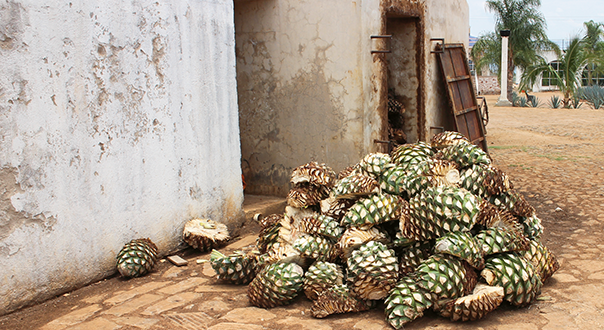By Sam Bygrave
Tequila, like wine, is an agricultural product. The climate, altitude, aspect and geographical features of an area all affect how the final bottling tastes. We spoke to the most knowledgeable tequila nerds, Reece Griffiths and Phil Bayly, to find out more — and how the crushing and cooking method affects the final liquid.
Terruño — it’s Spanish for terroir…
Where an agave is grown can have a great impact on the final taste of a tequila, said Griffiths.
“The influence of “terruño” and environment is incredibly important to the development of flavours and sugars in the agave,” he said. “The Valley of Tequila sits at around 1300m above sea level, in the shadow of a large volcano. The soil is dark and volcanic, with higher temperatures in the area. The agaves are generally planted more densely and grow much larger, resulting in slightly lower brix content and more vegetal and spicy distillates,” he said.
“Los Altos sits between 1800-2,300m above sea level with deep red, iron-rich soils and cooler temperatures resulting in smaller agaves with higher brix contents, leading to softer and fruitier distillates in general.”
This isn’t always the case, said Griffiths. “Although it is a good rule of thumb, tequileros can still produce styles that defy these generalisations,” he said. “Tapatio for example, from Arandas in Los Altos, is full-bodied and spicy, due to the wisdom of the Camarena’s to employ techniques such as distilling to bottling proof to intensify agave flavour.”
To tahona, or not to tahona…
“There are three ways to extract the sugars from the fiber,” said Bayly. “The tahona is about 65% efficient, because it is difficult to separate the juice from the fibres. Some producers ferment and do the first distillation with the fibre, adding another element to the process. El Tesoro, Siette Leguas and Olmeca’s Tezon use this process, [whereas] Fortaleza drains the fibers on racks to extract the juice.”
Griffiths tends to think that although it is more inefficient, the use of a tahona wheel to crush the agave will result in the extraction of fewer bitter elements, than with a diffusor (which will extract the maximum amount of sugars from the agave).
“It’s a fine balance between extracting maximum sugars from the harvest, and maintaining the care to reduce bitterness through the process,” he said.
“[The] tahona is beautiful, romantic and very traditional method, producing some incredible small batch tequilas, but cannot deal with large volumes,” said Griffiths. The third method, said Bayly, is the “roller mill from the sugar industry. It uses high energy and is about 75 – 80% efficient in removing the sugars from the fiber,” said Bayly.
The problem with diffusers, said Griffiths, is that “due to the nature of the process, which takes raw shredded agaves and washes them with hot, high pressure water, often with chemicals to strip sugars, there is no window for minimising or removing bitter elements during cooking.”
“The diffusor is very efficient,” said Bayly, but the resulting tequila “tends not to have the same depth and complexity.”
You can get a blanco tequila within 24 hours, said Griffiths — “just not one I want to drink.”
To go al horno, or autoclave — what’s the difference?
Griffiths doesn’t see much difference in flavour between cooking agaves al horno (that is, in an oven) or using an autoclave.
“Talking with many producers, the influence on flavour is minimal,” said Griffiths. “It will obviously impact the agaves in a slightly different way, but if one is better? I don’t think so.”
“Autoclaves are like a big pressure cooker,” said Bayly. “You fill, seal and apply steam under pressure, you have very good control of temperature and the juices are contained and cook with the agaves.”


